#Healthier Population
Explore tagged Tumblr posts
Text
As a trusted retail pharmacy in New Jersey, we are dedicated to delivering a wide range of vaccines to meet the needs of our diverse clientele. From routine childhood vaccinations to seasonal flu shots, we strive to maintain high standards of safety and efficacy. Our knowledgeable pharmacists are always available to answer any questions and provide guidance on the appropriate immunizations for each individual.
0 notes
Text
I'm so peeved that literally every aspect of the Gerudo in BOTW/TOTK serves to make me mad bc I love the Gerudo desert and I think that some of the most interesting NPCs to speak to are Gerudo.........alas
#august.chr#trying my damndest to piece together a BOTW/TOTK timeline bc I dont believe for an instant that the divine beasts are 10k years old#and i'm scraping my brain trying to think if any cutscenes from pre-calamity mention the ban on voe in the city#bc i'm trying to justify an in-universe reason why the gerudo would implement such a policy#given you know. they're a trading city. and banning men. means banning half of all possible trade partners.#my best guess is that the gerudo were always somewhat isolationist but were much more lenient#until the calamity hit and the gerudo faced serious damages from ganon's destruction and vah naboris causing sandstorms for a while#in the turmoil the gerudo banned visitation but after enough years it became obvious that this was destroying the city's economy#so they opened the gates back up but only to women. because the gerudos' need to find men to sustain their population in combination with#the new Inaccessability of gerudo women invited a rather predatory type of crowd. so this discriminatory gate system was an attempt to cull#this behavior. but it only made it worse because it just cemented gerudo women in the cultural perception as hard to get and Foreign#<-(aka Interesting skeevy edition)#so to the gerudo opening the gates means the not unlikely possibility of inviting harassment from scummy guys but not opening the gate will#never allow this terrible dynamic to heal. and instead of trying to forge a healthier relationship with dating for gerudo women#the gerudo have leaned into this gender seperationist ideal. as seen with mattison and the whole culture of removing young gerudo girls from#their fathers and the kingdom of hyrule at large in favor of staying in gerudo town#anyways sorry i hate the gerudo's worldbuilding but i actively hate the fan approaches to make it Woke Gender Essentialism more#it's literally not better if you go 'well the gerudo would let trans women into town if they just claimed to be women' like.#no they wouldn't. they let link into town in the gerudo vai fit because he passes as a woman in the outfit. if he changes clothes in town he#stops passing and they kick him out.#gerudo town is literally TERF city it's a city where a society of women have isolated themselves and banned men from interacting and will#only allow women they subjectively deem to be Womanly Enough to enter their gates#and teach young gerudo girls that men are dangerous and that they have to grow up in gerudo town until they come of age. like it's literally#a law that gerudo diaspora have to move to gerudo town before puberty#anyways sorry this is like the third time in the past 2 years i've drafted a post about how i think the gerudo's worldbuilding#is both illogical and abusive to the gerudo growing up in it. but illogical and abusive does not make for unrealistic worldbuilding either#so i want to find a way to work within its confines while also complaining loudly about it the entire time
11 notes
·
View notes
Text
Unveiling the Secrets of Life Below Water: Goal 14 for a Sustainable Future
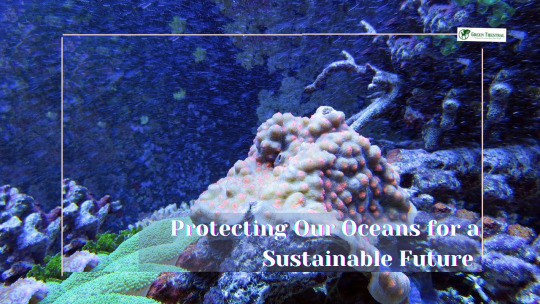
In our journey towards achieving a sustainable future, Goal 14 of the United Nations' Sustainable Development Goals (SDGs) plays a pivotal role. Life Below Water, as it is commonly referred to, focuses on the preservation and sustainable use of oceans, seas, and marine resources. With this goal, the international community aims to safeguard marine ecosystems, mitigate the impacts of human activities, and promote sustainable livelihoods for coastal communities. This article delves into the significance of Goal 14, explores the challenges faced, and highlights the initiatives that can help us ensure a healthier and more vibrant life below water.
Understanding the Importance of Goal 14
The Earth's oceans are vast and cover more than 70% of the planet's surface. They are teeming with life and harbor a remarkable diversity of species and ecosystems. From the mesmerizing coral reefs to the mysterious depths of the abyss, the oceans are a treasure trove of biodiversity, supporting millions of species, including plants, animals, and microorganisms.
Beyond their ecological significance, the oceans play a crucial role in regulating the Earth's climate. They act as a massive heat sink, absorbing a significant amount of the sun's energy and distributing it across the planet. Additionally, oceans play a vital role in the water cycle, facilitating the evaporation of water, which then falls as precipitation and sustains terrestrial ecosystems.
The oceans are not only important for the environment but also for human societies. They provide sustenance to millions of people around the world. Fishing, both for subsistence and commercial purposes, is a primary source of livelihood for coastal communities. The oceans also support economic activities such as tourism, shipping, and offshore industries, contributing significantly to global economies.
However, the delicate balance of marine ecosystems is under threat due to various human activities. Overfishing, driven by unsustainable practices and the demand for seafood, has led to the depletion of fish stocks worldwide. Large-scale industrial fishing, with destructive methods such as bottom trawling, threatens not only the targeted species but also the entire marine food web.
Marine pollution is another significant challenge faced by the oceans. Pollution from land-based sources, including plastic waste, chemicals, oil spills, and agricultural runoff, finds its way into the marine environment, causing severe harm to marine life and ecosystems. The accumulation of plastic debris in the oceans has reached alarming levels, forming giant garbage patches and causing entanglement and ingestion by marine organisms.
Habitat destruction and degradation are also taking a toll on marine ecosystems. Destructive practices such as coral reef destruction, coastal development, and the destruction of mangroves and seagrass beds result in the loss of critical habitats and the disruption of delicate ecological relationships. These habitats serve as nurseries and breeding grounds for many species, and their loss has far-reaching consequences for marine biodiversity.
Furthermore, climate change poses one of the most significant threats to life below water. Rising sea temperatures, ocean acidification, and sea-level rise are already impacting marine ecosystems. Corals, which are vital for the survival of countless marine species, are particularly vulnerable to rising temperatures and increased ocean acidity, leading to coral bleaching events and the degradation of coral reefs.
In recognition of the urgent need to protect and sustainably manage marine resources, Goal 14 of the United Nations' Sustainable Development Goals (SDGs) was established. Also known as Life Below Water, this goal aims to ensure the conservation and sustainable use of the oceans, seas, and marine resources for present and future generations.
Goal 14 encompasses various targets and indicators to guide efforts towards sustainable ocean management. One of the key focuses is the protection and restoration of coral reefs, which are among the most diverse and valuable ecosystems on Earth. Coral reefs provide habitat for numerous species, protect coastlines from erosion, and support vibrant tourism industries. By implementing measures to reduce coral bleaching, enhance reef resilience, and combat destructive practices, Goal 14 seeks to safeguard these vital ecosystems.
Another critical aspect of Goal 14 is the reduction of marine pollution. It calls for the prevention and significant reduction of marine debris, particularly plastic waste. Efforts are being made to promote better waste management systems, recycling and reusing plastics, and raising awareness about the detrimental effects of single-use plastics. Innovative technologies for ocean cleanup are also being developed to tackle existing pollution.
To address the issue of overfishing, Goal 14 emphasizes the need to restore fish stocks to sustainable levels. This involves implementing science-based management plans, combating illegal, unreported, and unregulated fishing, and promoting responsible fishing practices. Creating marine protected areas and adopting ecosystem-based management approaches can help protect critical habitats and ensure the long-term viability of fisheries.
Furthermore, Goal 14 acknowledges the urgent need to address ocean acidification, which poses a grave risk to marine organisms. By reducing carbon dioxide emissions and taking steps to enhance the resilience of marine ecosystems, such as protecting mangroves and seagrass beds, this goal aims to mitigate the impacts of ocean acidification and ensure the survival of vulnerable species.
Achieving Goal 14 requires a collaborative effort from governments, businesses, civil society organizations, and individuals worldwide. International cooperation is crucial to strengthen governance frameworks, regulate resource exploitation, combat illegal fishing, and promote sustainable practices. By taking collective action and embracing sustainable approaches, we can secure a healthier and more vibrant future for life below water.
Challenges and Threats to Life Below Water
The life below water faces a multitude of challenges that require immediate attention and concerted efforts. Overfishing, driven by unsustainable practices and illegal, unreported, and unregulated fishing, has led to a decline in fish stocks worldwide. The loss of biodiversity affects not only marine ecosystems but also the communities that depend on them for food security and economic opportunities.
Marine pollution poses another significant threat. Plastic waste, chemicals, oil spills, and other pollutants contaminate the oceans, harming marine life and ecosystems. The accumulation of plastic debris, in particular, has gained global attention due to its devastating impact on marine organisms and the potential consequences for human health through the food chain.
Ocean acidification, caused by the absorption of excess carbon dioxide from the atmosphere, poses a grave risk to marine organisms such as corals, shellfish, and plankton. Acidic waters can hinder the growth and survival of these organisms, disrupting the entire marine food web and impacting the livelihoods of coastal communities.
Initiatives and Solutions for a Sustainable Life Below Water
Achieving Goal 14 requires a comprehensive approach involving governments, businesses, civil society, and individuals. Several initiatives and solutions have emerged to address the challenges faced by life below water:
Sustainable Fisheries Management: Implementing science-based management plans, promoting responsible fishing practices, and combating illegal fishing are crucial steps towards replenishing fish stocks and ensuring the long-term sustainability of fisheries. Tools like marine protected areas and ecosystem-based management help preserve critical habitats and protect biodiversity.
Marine Pollution Prevention: Reducing plastic pollution and other sources of marine debris is vital. This can be achieved through improved waste management systems, recycling and reusing plastics, and raising awareness about the consequences of single-use plastics. Additionally, promoting the use of biodegradable alternatives and supporting innovative technologies for ocean cleanup can help mitigate the impact of existing pollution.
Climate Change Mitigation and Adaptation: Addressing climate change is fundamental to preserving life below water. Transitioning to renewable energy sources, reducing greenhouse gas emissions, and promoting sustainable coastal development are essential steps in mitigating the impacts of climate change on marine ecosystems. Additionally, enhancing the resilience of coastal communities through measures such as mangrove restoration, coastal protection, and sustainable tourism can aid adaptation efforts.
International Cooperation and Governance: Collaboration among nations is crucial for the effective implementation of Goal 14. Strengthening international frameworks, such as the United Nations Convention on the Law of the Sea (UNCLOS), and promoting regional cooperation can help combat illegal fishing, regulate resource exploitation, and ensure the sustainable use of marine resources.
Conclusion
Preserving life below water is not only crucial for the health of our oceans but also for the overall well-being of our planet. Goal 14 provides a roadmap for sustainable ocean management, aiming to conserve marine biodiversity, mitigate pollution, and promote the sustainable use of marine resources. By taking action at individual, local, and global levels, we can make a significant difference in ensuring a healthier and more vibrant future for life below water. Let us join hands and work together to safeguard the oceans for generations to come.
#Sustainable management of marine resources#Conserving marine biodiversity#Protecting coral reefs and marine ecosystems#Sustainable fishing practices for life below water#Reducing marine pollution for a healthier ocean#Restoring fish stocks for sustainable fisheries#Addressing the threats of overfishing#Combating illegal fishing activities#Preserving the delicate balance of marine ecosystems#Tackling plastic pollution in the oceans#Solutions for ocean acidification#Climate change impact on life below water#Sustainable tourism and the oceans#Promoting responsible coastal development#Achieving United Nations' Goal 14 for a sustainable future#Enhancing resilience of coastal communities#Sustainable livelihoods for coastal populations#Importance of ocean conservation and sustainability#Preserving marine habitats and species diversity#Ecosystem-based management for marine resources#Strengthening international cooperation for Goal 14#Achieving sustainable development through Goal 14#Role of marine protected areas in conservation#Long-term viability of marine ecosystems#Promoting sustainable shipping practices#Economic benefits of sustainable ocean management#Balancing human activities with marine conservation#The significance of Goal 14 in the SDGs#Ensuring a vibrant future for life below water#Global initiatives for the protection of marine environments
2 notes
·
View notes
Text
TERFs are silly. As a feminist wouldn't you want more women on your side?
#I may be detrans but I know a good thing when I see it#and the world can use far more women in it#just like it takes a hundred kind words to erase a harsh one#we need more folks reworking gender into healthier shapes#and that's the whole trans shtick#to transition into a healthier state of being specifically as it relates to gender#the patriarchy and toxic masculinity will not fall through queer theory alone#it falls when we each do the work within ourselves to divest from systems of power#and uh. exclusionism is absolutely a tool of the patriarchy#you shouldn't ban peoples#ban unacceptable behaviors#model what acceptable looks like#by all means make your own small spaces to heal where you need to feel safe#but tying to control and handcuff entire human populations is where you lose the plot
1 note
·
View note
Text

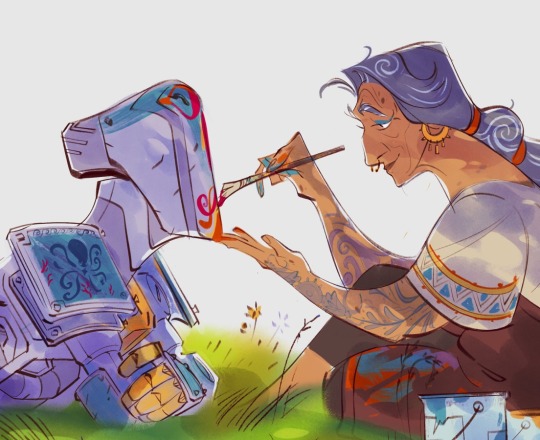
Mainstream sci-fi loves to insist on having drab looking machines as tools of war and oppression almost as a self fulfilling prophecy. But what if, hear me out, we started considering a future with more humane AI and healthier relations to different modes of intelligence (ie. the entire non-human being population of Earth)? 🤔
#artists on tumblr#solarpunk#illustration#character design#robot#I know the answer is ‘capitalism’ but without hope we wouldn’t have had other social rights movements nor the writer strikes happening now#there are SO MANY useful and amazing ways to work with ai yet they choose to essentially be rid of the one thing that makes us human#oc art
3K notes
·
View notes
Text
stop arguing about whether "sugar addiction" is real on a basis of some kind of neuroscience and start arguing about it on a basis of what addiction rhetoric means socially and politically
"sugar addiction" is a nonsensical phrase insofar as it does not make sense to talk about being dependent on something that all human bodies rely on. but really, that's completely beside the point. the points are as follows:
"addiction" has a certain currency in political discourse. think about the war on drugs, and the legacy of that rhetoric. it is pathologisation + demonisation working side-by-side to frame addiction as simultaneously a moral failing and a medical issue (a combination also seen, e.g., in discussions of sexually transmitted diseases)
sugar has also been heavily demonised in diet culture. my family was part of the "I quit sugar" trend, so I know all too well how much sugar can be treated like the most evil substance on the planet. again, demonisation language is paired with pathologising language when people then connect sugar to the concept of an "obesity epidemic"
when you then combine these things together, you start to get an idea of how dangerous the "sugar addiction" road is. people are led to believe that there is something wrong with them for habitually consuming something that all people need to consume. this only ever serves to further fatphobia and diet culture more broadly
when someone has a so-called "sugar addiction", they do not actually benefit from treating themself as an addict. the needs that they are trying to meet in their desire for sugar are more likely to be physiological. this can be a direct result of holding themselves to the unrealistic and unhealthy expectations that diet culture has held them to. in such a situation, it is healthier to slowly figure out a more balanced diet than to try to quit sugar entirely
as an alcoholic, I am particularly frustrated by "sugar addiction" discourse. when people sober up, they often crave a lot of processed sugar or carbs as a way of filling the dietary gap that has been left by alcohol. if someone in the vulnerable state of early sobriety gets convinced that they are developing a "secondary addiction" to sugar.... well, that's a dangerous thing for them to be convinced of
anyway, as an addict. addiction discourse is a form of demonising discourse that is weaponised against vulnerable populations all the time. and it is unhelpful to act as though a (real or otherwise) unhealthy relationship to sugar is the same as addiction and substance abuse
460 notes
·
View notes
Text
Please reblog for sample size.
#'yeah our population is 10% smarter more beautiful and healthier'#'no i will not tell you how we defined those concepts :)'#there are many people who think the exact same things that i do but because they dont code switch with white folks theyre considered dumber#neurodivergence is still considered like a disease by the majority of society#and really? beauty standards are good now? unbelievable#you fucking klanner asses#also prev is correct:#where is that post i saw yesterday about how many people will arrive at eugenics without putting in a single critical thought#about whether it might just Maybe be a bad thing?
129 notes
·
View notes
Text
Good News - May 15-21
Like these weekly compilations? Support me on Ko-fi! Also, if you tip me on Ko-fi, at the end of the month I'll send you a link to all of the articles I found but didn't use each week - almost double the content!
1. Translocation of 2,000 rhinos in Africa gets underway in “one of the most audacious conservation efforts of modern times”
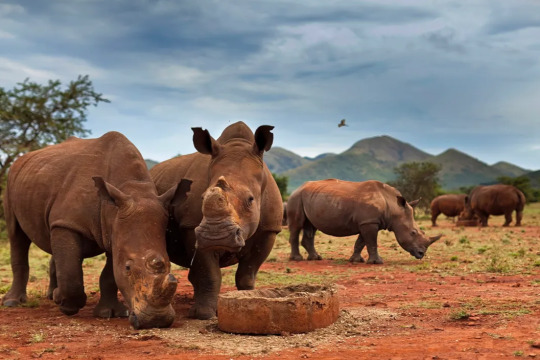
“The 2,000 rhinos - more than are currently found in any single wild location in Africa - represent around 12-15% of the continent’s remaining white rhino population. […] “Rhinos perform an important ecological function in the environment as a large grazing herbivore,” says Dale Wepener[….] “The protection of rhino is far more than just looking after rhino; other species that occur in the protected areas will benefit from the protection,” explains Jooste. “This will lead to an increase in diversity and result in much healthier ecosystems.”
2. Florida Corridor Buffers Effects of Climate Change on Wildlife — And People

“A massive multi-partner effort that has conserved 10 million acres for wildlife in Florida over past decades will help buffer wildlife—and people—from the effects of climate change, a new report says. […] Protecting these corridors is important for wildlife genetics, demography and connectivity […], conducting prescribed fires in the corridor can reduce the risk of more intense wildfires [… and] they can provide buffers against hurricanes and seasonal thunderstorms.”
3. Global life expectancy to increase by nearly 5 years by 2050 despite geopolitical, metabolic, and environmental threats
“Increases are expected to be largest in countries where life expectancy is lower, contributing to a convergence of increased life expectancy across geographies. The trend is largely driven by public health measures that have prevented and improved survival rates from cardiovascular diseases, COVID-19, and a range of communicable, maternal, neonatal, and nutritional diseases (CMNNs).”
4. Valencia has Spain’s longest urban park

“Jardin del Turia (Turia Garden) is the green spine of the City of Valencia and Spain’s (and possibly Europe’s) longest urban park stretching for a length of 8.5 kilometres [… and] the current administration plans to make Jardin del Turia Europe’s largest city green space by extending it to the sea[….] Almost all Valencia residents (97 per cent) live within 300 metres of an urban green space. […] Jardin del Turia is a true urban oasis that provides exceptional thermal comfort, with a temperature difference of up to three degrees compared to other areas of the city.”
5. This Paint Could Clean Both Itself and the Air
“When an artificial ultraviolet light source shines on [photocatalytic] paint, the nanoparticles react with pollutants to make them break down—theoretically removing them from the nearby air and preventing a discoloring buildup. [… R]esearchers developed a new photocatalytic paint that they claim works using UV rays from ordinary sunlight, making its self-cleaning properties easier to activate. They’ve also shown that they can effectively produce this paint from recycled materials [including fallen leaves].”
6. Planting Seedlings for a Cooler Rockingham
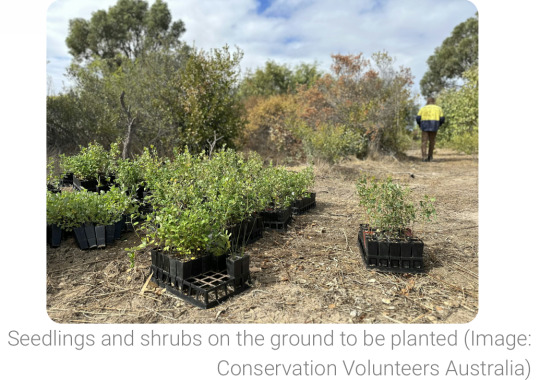
“A dedicated group of volunteers recently planted over a thousand native seedlings in Lewington Reserve [… and] re-established canopy cover to areas of the reserve to create cooling shade for the local community and provide homes for native wildlife. […] Planting lots of trees and shrubs in urban areas can help create shade and cool cities, mitigating the impacts of climate change, contributing to biodiversity conservation and building greener, more resilient communities.”
7. Sydney’s first dedicated affordable housing for trans women designed to deliver ‘positive outcomes’

“Community housing provider and charity Common Equity NSW, […] which is for people on very low to moderate incomes, prides itself on creating inclusive living and promotes the independence and well-being of people and communities […, and] will deliver the first-of-its-kind social housing in a bid to provide a safe place to live for transgender women seeking an affordable home.”
8. Rewilding: How a herd of bison reintroduced to Romania is helping ‘supercharge’ carbon removal
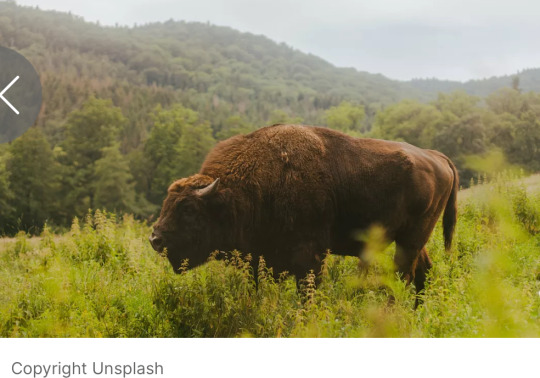
“170 European Bison reintroduced to Romania’s Țarcu mountains could help capture and store the carbon released by up to 84,000 average US petrol cars each year. […] By grazing a 48 square kilometre area of grassland in a wider landscape of 300 kilometres squared, they helped to capture an additional 54,000 tonnes of carbon each year. That is around 10 times the amount that would be captured by the ecosystem without the bison.”
9. World’s biggest grids could be powered by renewables, with little or no storage
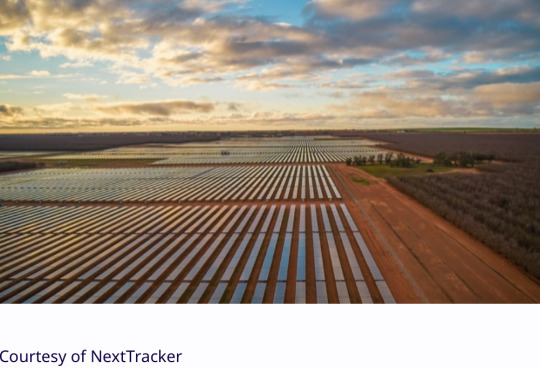
“[…] 100% renewable supply can then match the load by putting surplus electricity into two kinds of distributed storage worth that [an energy expert] says are worth buying anyway – ice-storage air-conditioning and smart bidirectional charging of electric cars, and recover that energy when needed, filling the last gaps with unobtrusively flexible demand.”
10. Supporting the Long-Term Survival of Copper River Salmon and Alaska Native Traditions
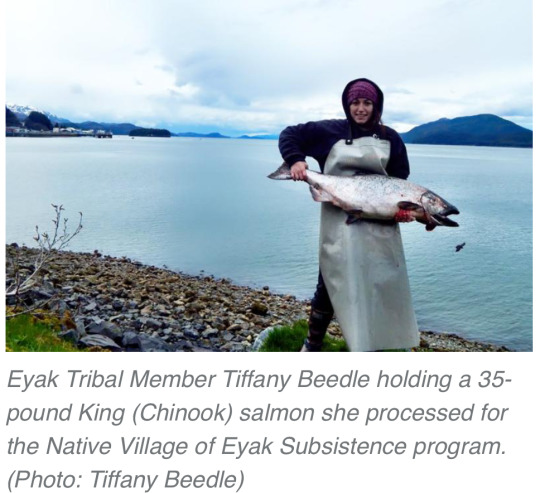
“With $4.3 million in NOAA funds, the Copper River Watershed Project and The Eyak Corporation will remove fish passage barriers, opening more streams for salmon spawning and subsistence fishing. [… As part of this effort, o]ld narrow culverts that constrict water flow will be replaced with “stream simulation” culverts wide enough to fit the full stream, including its banks. They are also deep to allow contractors to place stones and other material inside to mimic a natural stream bottom.”
May 8-14 news here | (all credit for images and written material can be found at the source linked; I don’t claim credit for anything but curating.)
#hopepunk#good news#rhino#white rhino#africa#conservation#rewilding#climate change#florida#wildlife#life expectancy#health#spain#green space#urban parks#recycling#trees#global warming#trans#affordable housing#australia#bison#romania#carbon#carbon capture#renewableenergy#reforestation#salmon#alaska native#nature
386 notes
·
View notes
Text


Sign the petition here
The entertainment industry, acclaimed for its glamour and stardom, is equally infamous for the enormous pressure it exerts on the mental health of artists. Resultant issues such as stress, anxiety, depression, substance misuse and even suicide are alarmingly high. According to research, performers are 2-3 times more likely to suffer from these issues compared to the general population.
In recent news of Liam Payne's tragic death as many others, the entertainment industry needs to be held accountable and be responsible to the welfare of their artists. We seek to implore lawmakers to create legislation safeguarding the mental health of artists within the industry.
Such a law would necessitate regular mental health check-ups, adequate rest periods, and the presence of mental health professionals on-set, including any ongoing support during their career. It will ensure a healthier, safer, and more conducive working environment for artists to cultivate their talents reducing phycological distress. This would also include early interventions to protect and minimise before it's too late. Furthermore, the increasing rate of musicians who die before the age of 35, is concerning. We need to act now!
The artist's role is invaluable not just in the world of entertainment but also in society. Let us ensure their protection and wellbeing. Your signature could be a lifeline for these talented individuals, contributing to a larger movement of mental health awareness and care in industries worldwide. Please, sign the petition.
#LiamsLaw
200 notes
·
View notes
Text

Why this petition matters
The entertainment industry, acclaimed for its glamour and stardom, is equally infamous for the enormous pressure it exerts on the mental health of artists. Resultant issues such as stress, anxiety, depression, substance misuse and even suicide are alarmingly high. According to research, performers are 2-3 times more likely to suffer from these issues compared to the general population.
In recent news of Liam Payne's tragic death as many others, the entertainment industry needs to be held accountable and be responsible to the welfare of their artists. We seek to implore lawmakers to create legislation safeguarding the mental health of artists within the industry.
Such a law would necessitate regular mental health check-ups, adequate rest periods, and the presence of mental health professionals on-set, including any ongoing support during their career. It will ensure a healthier, safer, and more conducive working environment for artists to cultivate their talents reducing phycological distress. This would also include early interventions to protect and minimise before it's too late. Furthermore, the increasing rate of musicians who die before the age of 35, is concerning. We need to act now!
The artist's role is invaluable not just in the world of entertainment but also in society. Let us ensure their protection and wellbeing. Your signature could be a lifeline for these talented individuals, contributing to a larger movement of mental health awareness and care in industries worldwide. Please, sign the petition.

SIGN THIS PETITION
Lottie Tomlinson has signed the petition (via LouisTSpainNews)

169 notes
·
View notes
Text
#LiamsLaw
The entertainment industry, acclaimed for its glamour and stardom, is equally infamous for the enormous pressure it exerts on the mental health of artists. Resultant issues such as stress, anxiety, depression, substance misuse and even suicide are alarmingly high. According to research, performers are 2-3 times more likely to suffer from these issues compared to the general population.
In recent news of Liam Payne's tragic death as many others, the entertainment industry needs to be held accountable and be responsible to the welfare of their artists. We seek to implore lawmakers to create legislation safeguarding the mental health of artists within the industry.
Such a law would necessitate regular mental health check-ups, adequate rest periods, and the presence of mental health professionals on-set, including any ongoing support during their career. It will ensure a healthier, safer, and more conducive working environment for artists to cultivate their talents reducing phycological distress. This would also include early interventions to protect and minimise before it's too late. Furthermore, the increasing rate of musicians who die before the age of 35, is concerning. We need to act now!
The artist's role is invaluable not just in the world of entertainment but also in society. Let us ensure their protection and wellbeing. Your signature could be a lifeline for these talented individuals, contributing to a larger movement of mental health awareness and care in industries worldwide. Please, sign the petition.
#LiamsLaw#please sign the petition and share#the first goal was 5000 signatures ✓ next goal 150000#💜🕊️#it started on twitter but I haven't seen it here yet so let's give it a boost!
144 notes
·
View notes
Text

Four culturally significant aquatic birds in Imperial Wardin- the skimmer gull, the albatross, the reed duck, and the hespaean.
The skimmer gull is a small seabird, distinguished by bright red beaks and a single, trailing tail plume. These are sacred and beloved animals with a long history of symbiosis with local fishers. They will intentionally attract the attention of fishermen, bringing them to shoals of fish that are too deep below the surface for the birds to reach. They then will snatch fish fleeing or caught in the nets, and will often be directly fed by their human assistants in an act of gratitude. They benefit tremendously from their sacred status and a taboo against killing or harming them, and can become absolute food-stealing menaces in seaside towns and cities.
The albatross is a seasonal visitor to the region, with this population migrating to small rocky islands in the White Sea to breed. The specific species occurring in this region is on the smaller side, and has a pale pink beak and soft orange legs. Albatrosses are common characters in regional animal folktales (usually as foolish, romantic types), and sometimes appear in tales as shapeshifters, usually turning into young women who have tumultuous affairs with lonely sailors.
Skimmer gulls and albatross are the most sacred animals of Pelennaumache, the face of God which looks upon the ocean, the winds, storms, maritime trade, fisheries, and broader concepts of luck and the infliction and deflection of curses. Killing either of these birds is considered to bring about disastrous bad luck (unless in the context of a proper sacrifice, most commonly in rites to bless ships and/or sailors with good winds and against ill fortune). The eggs of skimmer-gulls are free game and considered delicacies, while the preciousness of the albatross' single egg clutch is recognized and their consumption is generally discouraged (this isn't to say it doesn't happen).
Feathers of rightly sacrificed albatross and skimmer gulls are minor holy relics (ESPECIALLY gull tail plumes), and considered to be the ultimate good luck charm. The fortuitous find of a shed feather can also impart good luck and can be very valuable (the birds are sometimes poached for their feathers, though fears of the consequences are enough that this poaching is limited in scope). You will often see wealthier people wearing the feathers in hats and headdress, and any seafaring vessel worth its salt should have at least one aboard.
Both birds are evoked in the apotropaic Skimmer-Woman motif (in practice it generally has albatross characteristics, though is sometimes depicted with the tail plume of the gull).
The hespaean is a very unusual bird with two distinct species native to the region, one found exclusively in the western Black river system and its estuaries, and one found in the eastern Brilla and Kannethod river systems. They have very small pointed teeth in their bills, a trait virtually unknown outside of the flightless, beakless classes of birds (most prominently qilik). Their wings are vestigial and virtually nonexistent (with only two bony spurs remaining). These birds are almost exclusively aquatic and do not normally emerge onto land (they cannot walk upright at all, and must push themselves on their bellies). The legs of the Black river hespean develop blue pigmentation from their diet (the brighter the blue, the better fed and healthier the bird), which are waved above the surface during elaborate courtship displays. Both species are known for their haunting, warbling cries (very much like a loon, but more of a howling noise that develops into a shrill warble).
Hespaean build their nests in dense beds of reeds or small, vegetation-heavy river islands that provide some protection from predators. They raise their young during the height of the dry season (when more nesting surfaces are available and they can feed their young with more concentrated fish populations), which is an image of hope and resiliency during harsh dry times and the promise of the river's eventual bounty.
It is known that hespaean used to be caught as chicks and raised to help people catch fish (with ropes around their necks to prevent them from swallowing their catch). This practice is now very rare in the Imperial Wardi cultural sphere (mostly still practiced by the Wogan people along the Kannethod river, to whom these birds are also venerated animals) and has been largely replaced with the import of domesticated cormorants from the Lowlands to the southeast (which are more easily trained and can Usually be trusted not to attempt to swallow their catch).
These birds require large rivers that flow year round and have healthy, dense fish stocks. The population is in decline and they are now relatively rare, largely due to development and overfishing around rivers (and on a much larger timescale, the region becoming drier and water levels more irregular, and their competition with more versatile freshwater tiviit).
The reed duck is a migratory freshwater duck whose coming heralds the beginning of the wet season. They come to mate along rivers and wetlands during the final stretches of the dry season, timing their eggs to hatch with the rise in water levels and growth of the vegetation and insects they feed on. They have striking red-brown and gray plumage and very little sexual dimorphism (though the male is somewhat brighter in color and the flesh around the bill turns bright red during the breeding season).
Reed ducks are not domesticated, but some populations are semi-tamed and encouraged to return to certain sites to breed (the riverside temple to Anaemache in Ephennos attracts a massive flock of the ducks every wet season, continually blessing it with their presence and coating its grounds in droppings), and these stocks are the primary source of sacrificial ducks and coveted shed feathers.
Hespaean and reed ducks are the most sacred animals of Anaemache, the Face of God which looks upon freshwater (particularly rivers), rains, seasonal flooding, fertile earth/seasonal fertility, and wild plant life.
The hespaean is representative of Anaemache as the River Itself and the river as a provider of fish. This association comes down to their all-seasons presence in the rivers, and their population density being a signal of a healthy, well-flowing river with good fish stocks. Lands adjacent to hespean territory is often the most reliable and bountiful for human subsistence.
The reed duck in particular is the most venerated sacred animal of Anaemache, as representatives of Anaemache as a Face of seasonal fertility. Its coming announces the return of the rains and seasonal flooding that the region's agriculture relies on, and their cycle of fertility closely matches the cycles of the rivers and that of the earth itself (with their new life emerging with rains, flooding, and new vegetation in the wet season). There is no prohibition on hunting reed ducks (though proper rites and respect are expected for a sacred animal), and their meat and eggs is said to support female fertility and a healthy pregnancy.
#Hespaean are what I've been repeatedly misspelling as hespiornis up until now (got kind of lazy with the 'hespaean' name but the -an root#is established and makes sense). They're derived hesperornithes that have survived up to the present day but near exclusively as#smaller freshwater birds (their larger marine counterparts have been mostly displaced by tiviit and uhrwal)#Hespaean species exist outside of this region and have a worldwide (but highly fragmented and isolated) distribution#creatures
208 notes
·
View notes
Note
Hey there's someone trying to say you said you were pro Israel on discord? They're anonymous and say you blocked them before they could get screenshots so I don't really believe them, but still :[
Mhm. Nice bit of news to wake up to, this.
Yeah, so this person's a troll and they're more than likely lying on purpose in order to try to me look bad because I blocked them on Twitter for being unpleasant, something I rarely even do and they're still seething about it. The block had nothing to do with Gaza, the person was just being annoying and I thought it'd be healthier to block and move on. I'd really prefer not to have to give this person energy, but if there's a rumor going around, I'd like to nip it in the bud, since it's very easy to disprove in this case.
To explain what this person's blathering about: Earlier this week, on a Phonegingi plush advert, this random user that doesn't follow me (and actually instructs fans of mine not to interact with them in their bio) made a dramatic QRT decrying me for posting a DT advert during a strike week, which I honestly had no clue it was, especially since my own timeline was (and still is) full of accounts posting normally.
Given that the person seemingly encountered one of my posts in the wild and ended up seething because of it + likely didn't want anything to do with me on their timeline (as their bio indicated), after thinking it over briefly, I did the healthy thing and just blocked the person + moved on. Makes sense, right? I'll admit: Even if the way the person approached me was regrettable, if I'd known it was a strike week, I'd have participated (as I'd participated in the last one), so I stopped posting teasers for the week anyway, only resuming again yesterday.
I'll also say: I checked my own timeline btw and looked at the accounts posting, and nobody else had anyone acting like this in their replies, even the much larger accounts. Nor did anyone else contact/reply to me in any way stating any disapproval.
Given that I've only blocked one account recently that isn't a replybot (and ofc, given the subject matter of that tweet), I'd have to assume that this is the anonymous person spreading stuff.
I'd understand where this person was coming from if maybe I'd stayed completely silent about Gaza, (which a lot of accounts I follow have) but I haven't. I had a Palestinian aid post pinned on my Twitter for weeks, I've talked about Gaza's child population and my support for South Africa's Hague suit in my discord server, I've engaged in the boycotts, wound down posting during strikes, donated a pretty substantial amount of Dialtown revenue towards sending money/esims... I have 4 bucks in my bank account right now and when my next DT check comes in, you'd better believe I'll be giving more. That's my right as a private citizen and one I'll continue to exercise.
I feel pretty uncomfortable having to put this stuff in front of me to 'prove' myself, even if some of it is public anyway. Charity should be something you do because you CARE and if it wasn't for this person, I'd have been far happier keeping a lower profile and not explicitly calling attention to my own aid, but given this ask, I feel it'd be stupid not to nip this in the bud. The majority of this information could be easily found with the tiniest amount of digging, btw, so it's not like the user couldn't have known any of this. This is the part of having a fandom that creators seldom talk about. You block one person for being a lil annoying, next thing you know, there's rumors that you support genocides! Fun.
So yeah, I'd like you to tell this person to just move on like a normal person (send them this post if you have to) and to stop spreading incorrect rumors about me out of spite. If they insist, I'm happy to pull up receipts to prove everything I've said. If they actually thought I was pro-Israel, they wouldn't be spreading it anonymously, they'd be writing another public post about the subject matter. Also if you see anyone repeating the rumor, please correct them. Thanks.
280 notes
·
View notes
Photo


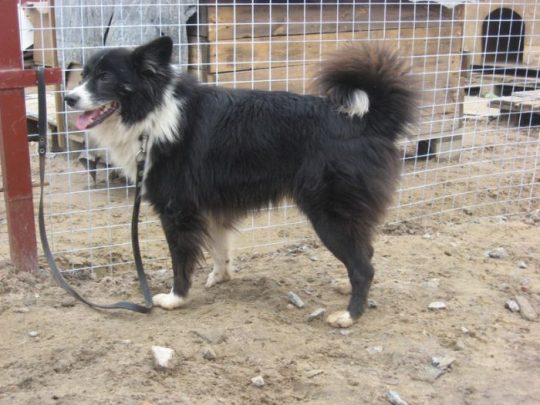
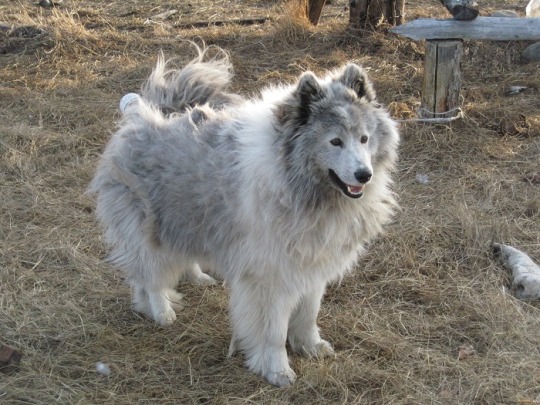

The Nenetskaya Laika or Nenets herding laika is a landrace reindeer herder from northern Russia kept by several indigenous peoples. In the 1890s the Norwegian Fram expedition to the antarctic purchased 33 nenets dogs for their journey, and the white surviving dogs became the foundation stock for the modern Samoyed breed.
Many dog breeds have a breed mythos that is varying degrees of truths and some almost completely fictitious to explain where the breed came from, what it does, and why they look the way they do. I think it flatters some people’s egos to imagine they own a piece of history. For instance I think the Shih Tzu or Pekingese becomes more appealing once you explain that they were bred by imperial royalty. Particularly egregious examples are the myths like bloodhounds and bassets having long dragging ears to "pick up" a scent, or that excessive 20th century wrinkling on the bulldog was somehow useful in bull baiting.
The Samoyed story is mostly true, the Nenets and Samoyed people do rely on these dogs for herding and companionship, but if you're imagining the large plush white dogs you see in the suburbs you're being a bit misled. This disconnect wouldn't matter if it weren't for the breeders espousing the breed myth as sacred text to justify purity above all else for breed preservation. But the dogs they are preserving are so often completely different from the dogs written about in the origin stories! It's the Nenets people of the 21st century who are more closely preserving the true spirit and image of the historic Samoyed dog.


So many breeds in their current state were invented by the kennel clubs then retroactively labeled as unchanged for hundreds of years. The Saint Bernard as we know it now is another good example of a kennel club fabrication.
After a century of pedigree breeding with a small founder population the Samoyed has an inbreeding coefficient nearing 30% (Dreger et al 2016) despite the UK KC listing 8.5% (because they measure COI by reading registered pedigree ancestry instead of genetic testing). 12% of tested dogs were heterozygous for the mutation linked to enamel hypoplasia. They're still pretty healthy dogs, but again it could be better.
Similar dogs from the same family and region get repeatedly subdivided up into separate, smaller groups who are then banned from mixing outside their small gene pool. Compound it with bottlenecks, overrepresented sires, and the sterilization of most offspring, and you're left with a gradual loss of diversity and an accumulation of deleterious mutations. This is why even purebred dogs who don't have exaggerated physical deformities still have higher rates of many hereditary disorders.
Selective breeding can be very useful and you can selectively breed for healthier dogs, but the overwhelming majority of dog breeders put more weight on either breeding for looks or obeying artificial parameters set on gene pools than breeding for welfare and long-term breed health.

-The Invention of the Modern Dog: Breed and Blood in Victorian Britain
2K notes
·
View notes
Note
I'm so happy you like my "oblivious König with severe mommy issues" prompt :3 I'm sorry if I made a few mistakes here and there cause English is my swcond language :(
I'm also thinking about König being absloutely snappy and bratty to reader as a defense mechanism, because he's not a baby! He can make his own lunch (frozen pizza), thank you very much, you are not his Mutter!
And reader is just standing there, smiling because she finds him so endearing when he's angry, not taking him seriously at all. She coos at him in her soft voice, saying she's so sorry, she just worries about her baby so much, he's not been feeding himself very well and look- look at your tummy, baby, you used to be bigger and healthier than that, how can I not be worried for my sweetheart? Of course she's stroking his tummy and whispering in his ear while she says that, and he has to stand there frozen or else he will let out the most pathetic whimper known to man.
He will then have to sit there and eat the most delicious meal ever while he's grumbling, frowning while reader offers him cut up slices of peach, his cock leaving a wet patch against his pants.
It gets even more pathetic in the bedroom because reader is just so full of instructions and praise for him. She's not bossy, she guides him with gentle instructions and calls him the worst names when he obeys, like her Perfect Baby and Big Boy and he just gets so riled up (because he's a military man, of course! he likes orders and that's all) he gets frustrated at his own horniness and decides to drill into her harder, and all she can do is call his cock big and he just cums and cums, groaning and whimpering into her neck :((( one day he will she her he is NOT a baby!
YES I love this for him this is exactly what he deserves!!!!
He thought he’d get a helpless pathetic girl to fuck on weekends but now he’s the pathetic one here, gritting his teeth to prevent himself from getting hard when she rubs his scalp and praises him for every single little thing he does. Every time he comes to see her there’s a big warm meal waiting for him, fat wet kisses and a hushed voice pressed next to his ear, asking him whether he had a rough week, poor thing. Poor baby must be so tired, working himself to the bone like that… His cock is pulling and leaking in his pants from her voice alone now, which is just great, just what he needed.
She says he doesn’t need to worry, says she’s here to ease his stress, and he already knows what it means; she’s going to give him infernally good head that will dissolve him into atoms and make him moan so pathetically he’ll never survive the shame that follows. Which means he must prevent it from happening, any way he can, and so he fleshes out a plan to rearrange her guts later from behind so he doesn’t need to look into those loving, nurturing eyes, always praising him for doing so so good.
The whole female population is looking at him through those eyes, cheering him on with love and gentle care, and he wants that shit so much he’s about to punch a hole through a wall and then slump on the floor to have a big fat ugly cry but he can’t do that, no. He has to stay strong and conquer… whatever this is.
And then the plan backfires horribly when she kickstarts a handjob before he’s even finished his meal. After only a minute or two he finds himself staring up at her, eyes wide and helpless and his cock jerking and throbbing and twitching in her hand as she continues to give him slow, long strokes that are sending him to braindead bliss already.
She babbles in his ear and tells him he can cum whenever he wants, he’s deserved it… And before he knows it there are long, thick strings of cum shooting out, a painful, desperate whine of a moan punching through the air. He never knew he could sound so needy. And pathetic... And needy.
His head drops to see the mess he just made, but she’s already cleaning it up, dabbing his lap with a clean, wet towel, looking up at him with a bright, loving smile.
Scheisse…
#anon I strongly suspect that you’re a sis from another mis or a bro from another hoe because JESUS CHRIST#pathetic oblivious könig w/ mommy issues is my dopamine cocaine and caffeine
141 notes
·
View notes
Text
A similar process of medicalising protest and political resistance has been documented in my own research on the Māori "cultural renaissance" of the 1960s and 1970s. According to psychiatric authorities and government statistics, until the 1950s, Māori—the Indigenous people of Aotearoa, New Zealand—were mentally healthier than settler populations. This situation drastically changed in the following decades, with a signifiant rise in psychiatric incarceration (especially for those aged between 20 and 30 years old) and rates of psychoses for Māori. By 1973, the psychologist Richard Kelly was suggesting that the typical image of the Māori held by the white colonisers was in need of revision. The aggressive and deluded personality traits which accompanied a psychosis diagnosis meant that the evidence now stood "in marked contrast to the stereotype commonly held by the [white] European of a simple, good natured, relaxed and often lazy people".
This pervading view of the Indigenous people as increasingly psychotic coincided with what is known locally as the Māori cultural renaissance. Influenced by the civil rights movement in the United States as well as countercultural philosophies and global struggles against colonial power, Māori organisations emerged in the 1960s as a direct challenge to the authority of the British Crown. Political protests and forms of direct action around the country—including land rights marches, occupations and protests at public and sporting events, and other acts of civil disobedience—sought to highlight the systematic theft of Māori land and cultural genocide which had taken place since the imposition of white rule in 1840. Walker rightly conceptualises the formation of a growing political consciousness among the Indigenous people—particularly the young people—during the 1960s and 1970s as a direct challenge to the hegemony of colonial authority. White society was frightened by what appeared to be an increasingly angry and aggressive Māori population, and psychiatry's latent colonial function in the British colony was enacted through the labelling and incarcerating of increasing numbers of the Indigenous population . . . [A]s a supporting institution of white rule, the mental health system has demonstrated its ability across the globe to reframe legitimate protest and struggle against an oppressive social order as symptoms of major mental illness.
Bruce M.Z. Cohen, Psychiatric Hegemony: A Marxist Theory of Mental Illness
147 notes
·
View notes